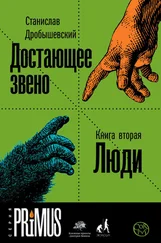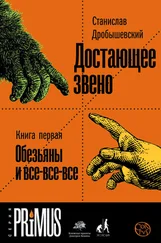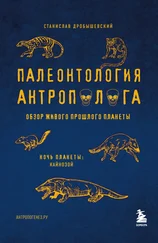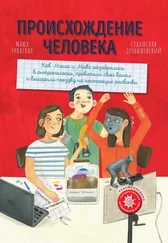Xiao Sh., Zhang Yu. et Knoll A.H. Three-dimensional preservation of algae and animal embryos in a Neoproterozoic phosphorite // Nature, 1998, V.391, № 6667, pp.553-558.
Yin L., Zhu M., Knoll A.H., Yuan X., Zhang Ju. et Hu J. Doushantuo embryos preserved inside diapause egg cysts // Nature, 2007, V.446, № 7136, pp.661-663.
Иванова-Казас О.М. Вторичный рот и его филогенетическое значение // Биология моря, 2015, Т.41, № 2, сс.81-91.
Иванцов A.Ю., Журавлёв A.Ю., Kрaсилoв В.A., Легутa A.В., Meльникoвa Л.M., Урбанек А., Ушaтинскaя Г.T., Малаховская Я.Е. Уникальные синские местонахождения раннекембрийских организмов. Сибирская платформа. М., Наука, 2005, 143 с.
Малахов В.В. Происхождение хордовых животных // Соросовский образовательный журнал, 1996, № 7, сс.2-9.
Archibald J.M. Genomic perspectives on the birth and spread of plastids // Proceedings of the National Academy of Sciences, USA, 2015, V.112, № 33, pp.10147-10153.
Aria C. et Caron J.-B. Burgess Shale fossils illustrate the origin of the mandibulate body plan // Nature, 2017, V.545, № 7652, pp.89-92.
Awramik S.M. The oldest records of photosynthesis // Photosynthesis Research, 1992, V.33, pp.75-89.
Bengtson S. et Zhao Yu. Predatorial borings in late Precambrian mineralized exoskeletons // Science, 1992, V.257, № 5068, pp.367-369.
Bengtson S., Rasmussen B. et Krapez B. The Paleoproterozoic megascopic Stirling biota // Paleobiology, 2007, V.33, № 3, pp.351-381.
Bergstrom Ja. et Xian-Guang H. Arthropod origins // Bulletin of Geosciences, 2003, V.78, № 4, pp.323-334.
Briggs D.E.G. et Collins D. The arthropod Alalcomenaeus cambricus Simonetta, from the middle Cambrian Burgess Shale of British Columbia // Palaeontology, 1999, V.42, № 6, pp.953-977.
Briggs D.E.G., Erwin D.H. et Collier F.J. The fossils of the Burgess Shale. Washington, Smithsonian Institution Press, 1994, 238 p.
Briggs D.E.G., Lieberman B.S., Halgedahl S.L. et Jarrard R.D. A new metazoan from the middle Cambrian of Utah and the nature of the Vetulicolia // Palaeontology, 2005, V.48, № 4, pp.681-686.
Brock G.A. et Paterson J.R. A new species of Tannuella (Helcionellida, Mollusca) from the early Cambrian of South Australia // Memoirs of the Association of Australasian Palaeontologists, 2004, V.30, pp.133-143.
Budd G. A Cambrian gilled lobopod from Greenland // Nature, 1993, 364, № 6439, pp.709-711.
Budd G. E. The morphology of Opabinia regalis and the reconstruction of the arthropod stem-group // Lethaia, 1996, V.29, № 1, pp.1-14.
Budd G.E. Tardigrades as «Stem-Group Arthropods»: the evidence from the Cambrian fauna // Zoologischer Anzeiger – A Journal of Comparative Zoology, 2001, V.240, № 3-4, pp.265-279.
Butterfield N.J. An early Cambrian radula // Journal of Paleontology, 2008, V.82, № 3, pp.543-554.
Caron J.-B. et Aria C. Cambrian suspension-feeding lobopodians and the early radiation of panarthropods // BMC Evolutionary Biology, 2017, V.17, p.29.
Caron J.-B., Scheltema A., Schander Ch. et Rudkin D. A soft-bodied mollusc with radula from the Middle Cambrian Burgess Shale // Nature, 2006, V.442, № 7099, pp.159-163.
Chen J.Y., Edgecombe G.D., Ramskold L. et Zhou L. Head segmentation in early Cambrian Fuxianhuia: implications for arthropod evolution // Science, 1995, V.268, № 5215, pp.1339-1343.
Chen Ju.-yu., Huang D.-y. et Bottjer D.J. An early Cambrian problematic fossil: Vetustovermis and its possible affinities // Proceedings of the Royal Society B, 2005, V.272, № 1576, pp.2003-2007.
Chengjiang fossil site. Ministry of Housing and Urban-Rural Development of the People's Republic of China, 2011, 496 p.
Collins D. The «evolution» of Anomalocaris and its classification in the arthropod class Dinocarida (nov.) and order Radiodonta (nov.) // Journal of Paleontology, V.70, № 2, 1996, pp.280-293.
Daley A.C. et Legg D.A. A morphological and taxonomic appraisal of the oldest anomalocaridid from the lower Cambrian of Poland // Geological Magazine, 2015, V.152, № 5, pp.949-955.
Daley A.C., Budd G.E., Caron J.B., Edgecombe G.D. et Collins D. The Burgess Shale Anomalocaridid Hurdia and its significance for early euarthropod evolution // Science, 2009, V.323, № 5921, pp.1597-1600.
Dong L., Xiao Sh., Shen B., Yuan X., Yan X. et Peng Yo. Restudy of the worm-like carbonaceous compression fossils Protoarenicola, Pararenicola, and Sinosabellidites from early Neoproterozoic successions in North China // Palaeogeography, Palaeoclimatology, Palaeoecology, 2008, V.258, № 3, pp.138-161.
Dzik J. Yunnanozoon and ancestry of chordates // Acta Palaeontologica Polonica, 1995, V.40, № 4, pp.341-360.
Dzik J. The xenusian-to-anomalocaridid transition within the lobopodians // Bollettino della Societ Paleontologica Italiana, 2011, V.50, № 1, pp.65-74.
Edgecombe G.D. et Legg D.A. The arthropod fossil record // Arthropod biology and evolution. Eds.: A. Minelli et al. Berlin, Heidelberg, Springer-Verlag, 2013, pp.393-415.
Fedonkin M.A. The origin of the Metazoa in the light of the Proterozoic fossil record // Paleontological Research, 2003, V.7, № 1, pp.9-41.
Gee H. Jefferies' calcichordate theory // Before the backbone: views on the origin of the vertebrates. London, Chapman & Hall, 1996.
Gould S.J. Wonderful life. The Burgess Shale and the nature of history. Norton, 1990, 347 p.
Holland L.Z. Evolution of basal deuterostome nervous systems // The Journal of Experimental Biology, 2015, V.218, pp.637-645.
Hou X. et Bergstrom J. The Chengjiang fauna – the oldest preserved animal community // Paleontological Research, 2003, V.7, № 1, pp.55-70.
Hou X. et Chen J. Early Cambrian tentacled worm-like animals (Facivermis gen. nov.) from Chengjiang, Yunnan // Acta Palaeontologica Sinica, 1989, V.28, № 1, pp.32-42.
Iu J., Shu D., Han J. et Zhang Zh. A rare lobopod with well-preserved eyes from Chengjiang Lagerstatte and its implications for origin of arthropods // Chinese Science Bulletin, 2004, V.49, № 10, pp.1063-1071.
Ivantsov A.Yu. Trilobite-like arthropod from the lower Cambrian of the Siberian Platform // Acta Palaeontologica Polonica, 1999, V.44, № 4, pp.455-466.
Ivantsov A.Yu. Paleontological evidence for the supposed Precambrian occurrence of mollusks // Paleontological Journal, 2010, V.44, № 12, pp.1552-1559.
Ivantsov A.Yu., Malakhovskaya Ya.E. et Serezhnikova E.A. Some problematic fossils from the Vendian of the Southeastern White Sea region // Paleontological Journal, 2004, Vol.38, № 1, pp.1-9.
Ivantsov A.Yu., Zhuravlev A.Yu., Leguta A.V., Krassilov V.A., Melnikova L.M. et Ushatinskaya G.T. Palaeoecology of the early Cambrian Sinsk biota from the Siberian Platform // Palaeogeography, Palaeoclimatology, Palaeoecology, 2005, V.220, № 1-2, pp.69-88.
Jefferies R.P.S. The calcichordate theory // Science, 1999, V.236, № 4807, p.1476.
Keeling P.J. The endosymbiotic origin, diversification and fate of plastids // Philosophical Transactions of the Royal Society B, 2010, V.365, № 1541, pp.729-748.
Kimmig J., Strotz L.C. et Lieberman B.S. The stalked filter feeder Siphusauctum lloydguntheri n. sp. from the middle Cambrian (Series 3, Stage 5) Spence Shale of Utah: its biological affinities and taphonomy // Journal of Paleontology, 2017, V.91, № 5, pp.902-910.
Kolesnikov A.V., Liu A.G., Danelian T. et Grazhdankin D.V. A reassessment of the problematic Ediacaran genus Orbisiana Sokolov 1976 // Precambrian Research, 2018, V.316, pp.197-205.
Читать дальше
![Станислав Дробышевский Палеонтология антрополога. Книга 1. Докембрий и палеозой [litres] обложка книги](/books/404766/stanislav-drobyshevskij-paleontologiya-antropologa-cover.webp)






![Станислав Лем - Рассказы о пилоте Пирксе. Непобедимый [сборник litres]](/books/404313/stanislav-lem-rasskazy-o-pilote-pirkse-nepobedimy-thumb.webp)
![Станислав Романов - Самая страшная книга 2020 [антология, litres]](/books/405084/stanislav-romanov-samaya-strashnaya-kniga-2020-antol-thumb.webp)



